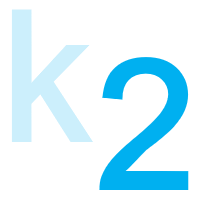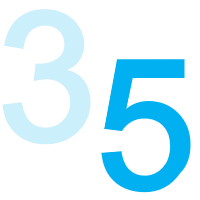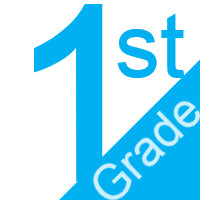1st Grade English
 Standards Glossaries
Standards Glossaries
| K Grade English | 1st Grade English | 2nd Grade English |
 Standards Glossaries
Standards Glossaries
| 3rd Grade English | 4th Grade English | 5th Grade English |
 Standards Glossaries
Standards Glossaries
| 6th Grade English | 7th Grade English | 8th Grade English |
 Standards Glossaries
Standards Glossaries
| 9th Grade English | 10th Grade English | 11th Grade English | 12th Grade English |
 Standards Glossaries
Standards Glossaries
| HS Journalism | HS Speech |
| Prioritized Standards |
ELA-01.LNarrative for the Language Strand:As they move through formal schooling, students must gain control over the many conventions of standard English grammar, usage, and mechanics. They must also learn various ways to convey meaning effectively. Language standards include the rules of standard
written and spoken English as well as the use of language as craft and informed choice among alternatives. The vocabulary standards focus on understanding words and phrases (their relationships and nuances) and acquiring new academic and domain-specific
vocabulary.
First grade students continue learn to write upper and lower case letters and when to use capital letters in writing. They also learn about how to use basic punctuation marks, and how to use singular and plural nouns, and verbs in the past, present and future tense.
How to help your child with the standards in the Language Strand:
Resources
Calculation Method for StrandsStrands are larger groups of related standards. The Strand Grade is a calculation of all the related standards. Click on the standard name below each strand to access the learning targets and proficiency scales for each strand's related standards. | |
ELA-01.RFNarrative for Reading Foundations Strand:The Foundational Skill standards are directed toward fostering students' understanding and working knowledge of: Concepts of Print: Recognizing the features print (ex. a sentence begins with a capital and has punctuation at the end). Phonological Awareness: Understanding how spoken words work. Phonics and Word Study: The relationship between letters and sounds in language. Students will learn to recognize high-frequency words automatically. Students will also practice recognizing words with irregular spellings (sometimes refered to as sight words). Fluency: The ability to read smoothly and expressively. A fluent reader is one who reads and understands what he or she is reading. Fluency skills should increase as learners progress from beginning to advanced. The foundational skills standards are not meant to be taught as isolated skills. These standards are necessary and important components of an effective, comprehensive reading program designed to develop proficient readers with the ability to comprehend what is read across a range of text types and content areas (social studies, science).
How to help your child at home with the foundational skill strand:
ResourcesCalculation Method for StrandsStrands are larger groups of related standards. The Strand Grade is a calculation of all the related standards. Click on the standard name below each strand to access the learning targets and proficiency scales for each strand's related standards. | |
ELA-01.RF.03
ELA-01.RF.03 Know and apply grade-level phonics and word analysis skills in decoding words.Sub-Standards:
a. Know the spelling-sound correspondences for common consonant digraphs.
b. Decode regularly spelled one-syllable words. c. Demonstrate use of beginning and ending blends d. Know final -e and common vowel team conventions for representing long vowel sounds.
e. Use knowledge that every syllable must have a vowel sound to determine the number of syllables in a printed word.
f. Decode two-syllable words following basic patterns by breaking the words into syllables. g. Read words with inflectional endings. h. Recognize and read grade-appropriate irregularly spelled words. | |
ELA-01.RINarrative for Informational Reading Strand:The primary purpose of informational text (non-fiction) is to inform the reader about the natural or social world. Different from literaure (fiction), informational text does not utilize characters. In this strand students are expected to determine the topic (who or what the text is about). Students will also ask and answer questions about the topic of the text and retell details from informational text they hear. Informational text offers a variety of structures to assist the readers in finding information quickly and efficiently. These might include a table of contents, bold or italicized text, glossaries, embedded definitions for specialized vocabulary, realistic illustrations of photos, captions and other labels, and graphs and charts. Continued work on reading comprehension standards will heighten student abilities to read more age appropriate informational (non-fiction) text. Teachers use assessment and observation to determine if students are ready to progress to more challenging reading selections. Each child is unique, so be flexible, and trust your judgment as you assist your child. Together teachers and parents can help students make better choices when selecting books to read. Our youngest readers benefit from rereading text and text with high repetition. Although levels of reading determined through observation and assessment are valuable, caution is important in not confining children to a text level. Young readers can progress through levels of text quickly, but not all children progress at the same pace, which is expected. Increasing the frequency of reading is the highest predictor of success at any grade level. Building a child’s confidence, through successful experiences with reading, will encourage that desire to read more. Developing successful, life-long readers is our ultimate goal.
How to Help Your Child At Home with the Informational Text Strand:
Resources
Calculation Method for StrandsStrands are larger groups of related standards. The Strand Grade is a calculation of all the related standards. Click on the standard name below each strand to access the learning targets and proficiency scales for each strand's related standards. | |
ELA-01.RI.01 | |
ELA-01.RI.02 | |
ELA-01.RLNarrative for Literature Strand:Reading literature (fiction) allows students to learn about other lives and times that relate to their own personal experiences. In this strand, students will ask and answer questions about key details (characters, setting, plot), along with retelling what they have read. Literature (fiction) helps readers learn important life lessons through the lives of the characters, comparing their own experiences with the experiences of the characters they read about. Reading literature (fiction) allows us to learn to appreciate the beauty of the language, and to be articulate speakers and writers. Continued work on reading comprehension standards will heighten student abilities to read more age appripriate literature (fiction) text. Teachers use assessment and observation to determine if students are ready to progress to more challenging reading selections. Each child is unique, so be flexible, and trust your judgment as you assist your child. Together teachers and parents can help students make better choices when selecting books to read. Our youngest readers benefit from rereading text and text with high repetition. Although levels of reading determined through observation and assessment are valuable, caution is important in not confining children to a text level. Young readers can progress through levels of text quickly, but not all children progress at the same pace, which is expected. Increasing the frequency of reading is the highest predictor of success at any grade level. Building a child’s confidence, through successful experiences with reading, will encourage that desire to read more. Developing successful, life-long readers is our ultimate goal.
How to Help Your Child At Home with the Literature Strand:
Resources:
Calculation Method for StrandsStrands are larger groups of related standards. The Strand Grade is a calculation of all the related standards. Click on the standard name below each strand to access the learning targets and proficiency scales for each strand's related standards. | |
ELA-01.RL.01 | |
ELA-01.RL.02 | |
ELA-01.SLNarrative for the Speaking and Listening Strand
Speaking/ListeningSpeaking and listening standards require students to develop a range of oral communication and interpersonal skills that facilitate various types of discussion and oral exchange. Students must learn to work together, express and listen carefully to ideas, and integrate information from various sources, (e.g., oral, visual, quantitative, and media). Students must also gain skills in evaluating what they hear, use various sources to support what they are communicating, and adapt their speech to the content and the task at hand.Besides having intrinsic value as modes of communication, speaking and listening skills are necessary prerequisites for reading and writing. Oral language development precedes and is the foundation for writing. A student’s listening and speaking vocabulary sets boundaries on what that student can read and understand no matter how well they decode. In addition, new technologies have expanded the role speaking and listening play in acquiring and sharing ideas, tightening their link with other forms of communication. Students in first grade participate in discussions with peers and adults about grade level topics and texts they have heard read aloud or presented orally or through other media. They learn and practice rules of discussion such as taking turns and listening to others. They ask and answer questions about key details in texts and other information presented orally. They also use questioning to acquire additional information and to clarify something that is not understood.
How to help your child with the Speaking and Listening Standards:
Resources
Calculation Method for StrandsStrands are larger groups of related standards. The Strand Grade is a calculation of all the related standards. Click on the standard name below each strand to access the learning targets and proficiency scales for each strand's related standards. | |
ELA-01.SL.01
ELA-01.SL.01 Participate in collaborative conversations with diverse partners about grade 1 topics and texts with peers and adults in small and larger groups.
a. Follow agreed upon rules for discussions (e.g., listening to others and taking turns speaking about the topics and texts under discussion).
b. Build on others’ talk in conversations by responding to the comments of others through multiple exchanges. c. Ask questions to clear up any confusion about the topics and texts under discussion. | |
ELA-01.WNarrative for the Writing StrandThe standards in this strand include three kinds of writing: opinion, informative, and narrative. Opinion and informative writing will likely start with kids reading one or more books and responding to what they’ve learned. In an opinion piece, your child introduces the book or topic he’s writing about, states his opinion or preference about it, gives a reason or two to support his opinion (e.g. Ramona was wrong because she hurt Susan when she pulled her curls.), and then offers some sort of conclusion to complete his writing. In an informative piece, your child names what he’s writing about and gives some information, facts, or details about it (e.g.Dinosaurs lived on Earth a long time ago. Some dinosaurs were bigger than people are today…), and, as in an opinion piece, offers some sense of conclusion. Writing a narrative is like writing a story, and your child’s story may be inspired by books, experiences, or pure imagination. Your first grader’s story should describe two or more events, include some details about what happened, and use sentence order, verb tense, and words to put the events in order (e.g. Then Goldilocks tries the second bowl of porridge. Next she eats the third bowl of porridge.) and give some sense of the story coming to an end — not only by writing “The End,” although that’s a good start. Students learn and apply the rules of standard written English and to strengthen and expand their vocabulary, use of language, and organization of ideas. You will find the standards for these skills in the Language Strand.
How can I help my child at home with the writing strand standards?
ResourcesCalculation Method for StrandsStrands are larger groups of related standards. The Strand Grade is a calculation of all the related standards. Click on the standard name below each strand to access the learning targets and proficiency scales for each strand's related standards. | |
ELA-01.W.01ELA-01.W.01 Write opinion pieces in which they introduce the topic or name the book they are writing about, state an opinion, supply a reason for the opinion, and provide some sense of closure.Sub-Standards:
a. Introduce the topic or name the book they are writing about.
b. State an opinion.
c. Supply a reason for the opinion.
d. Provide some sense of closure. | |
ELA-01.W.02ELA-01.W.02 Write informative/explanatory texts in which they name a topic, supply some facts about the topic, and provide some sense of closure.Sub-Standards:
a. name a topic
b. supply some facts about the topic
c. provide some sense of closure
| |
ELA-01.W.03ELA-01.W.03 Write narratives in which they recount two or more appropriately sequenced events, include some details regarding what happened, use temporal words to signal event order, and provide some sense of closure.Sub-Standards:
a. recount two or more appropriately sequenced events
b. include some details regarding what happened
c. use transitional words to signal event order
d. provide some sense of closure | |



 Grade 1
Grade 1